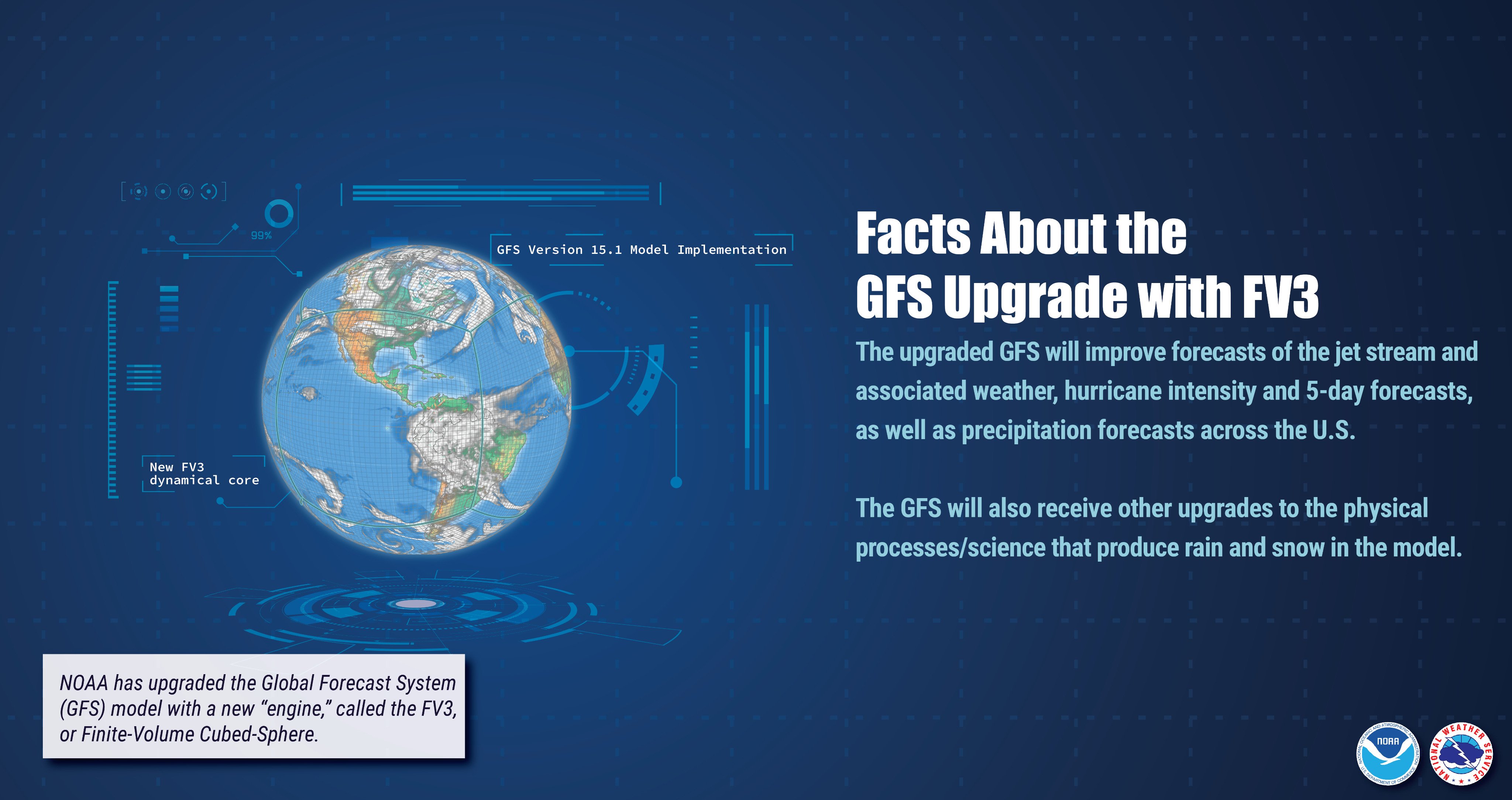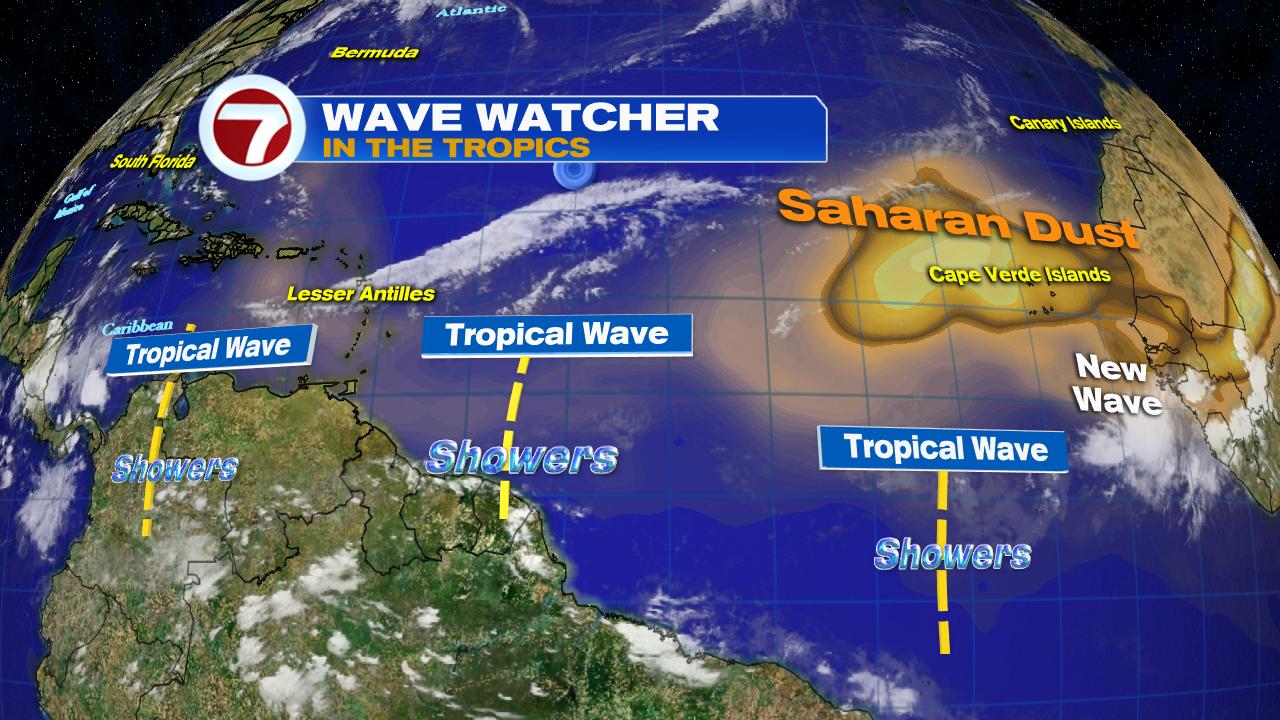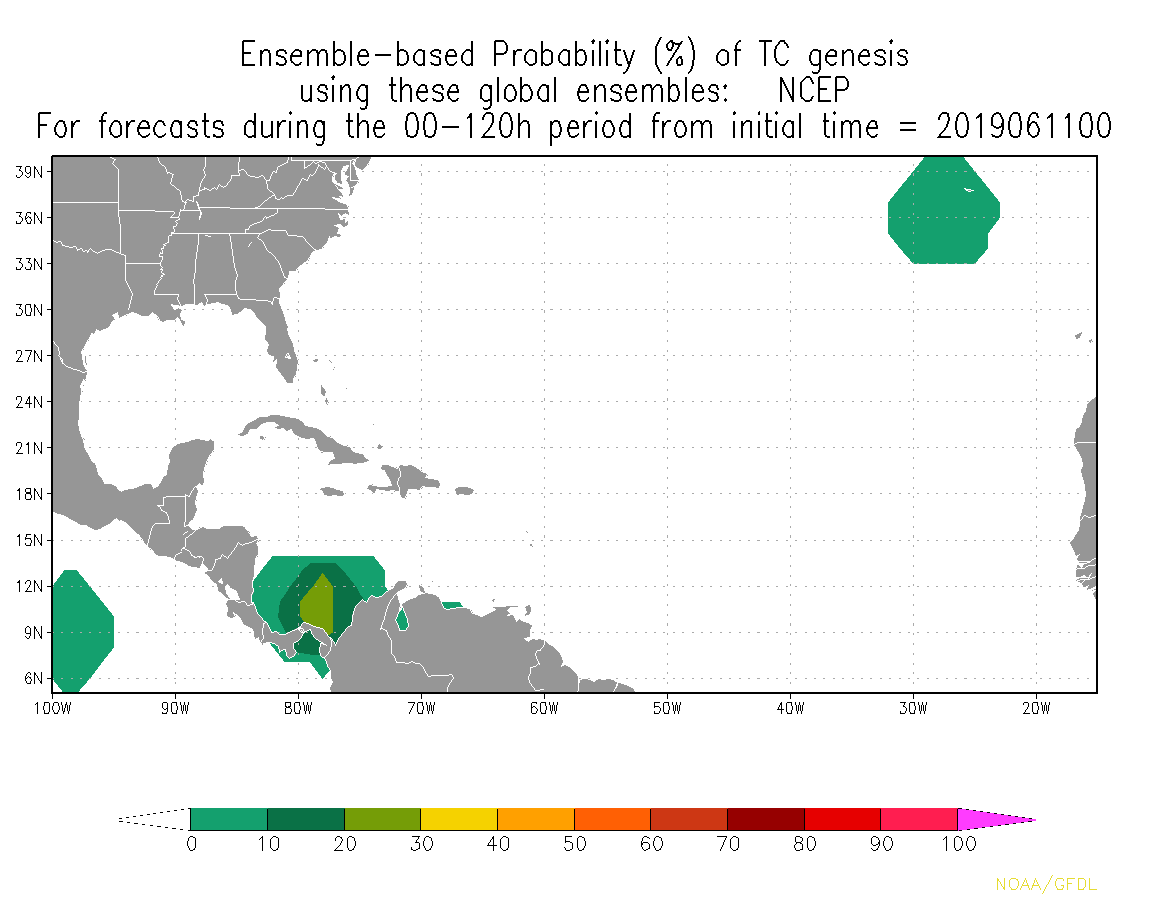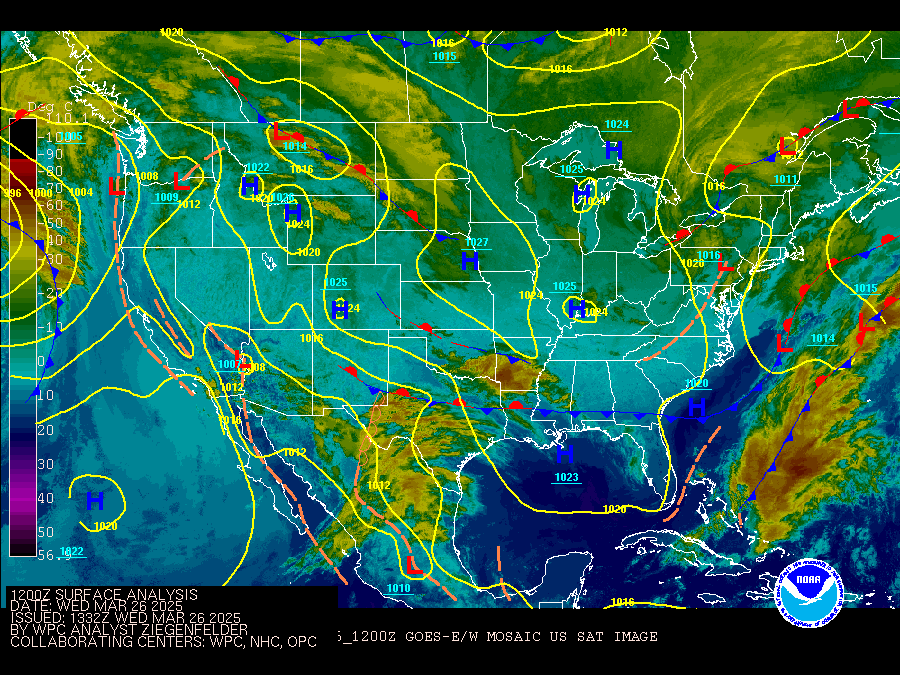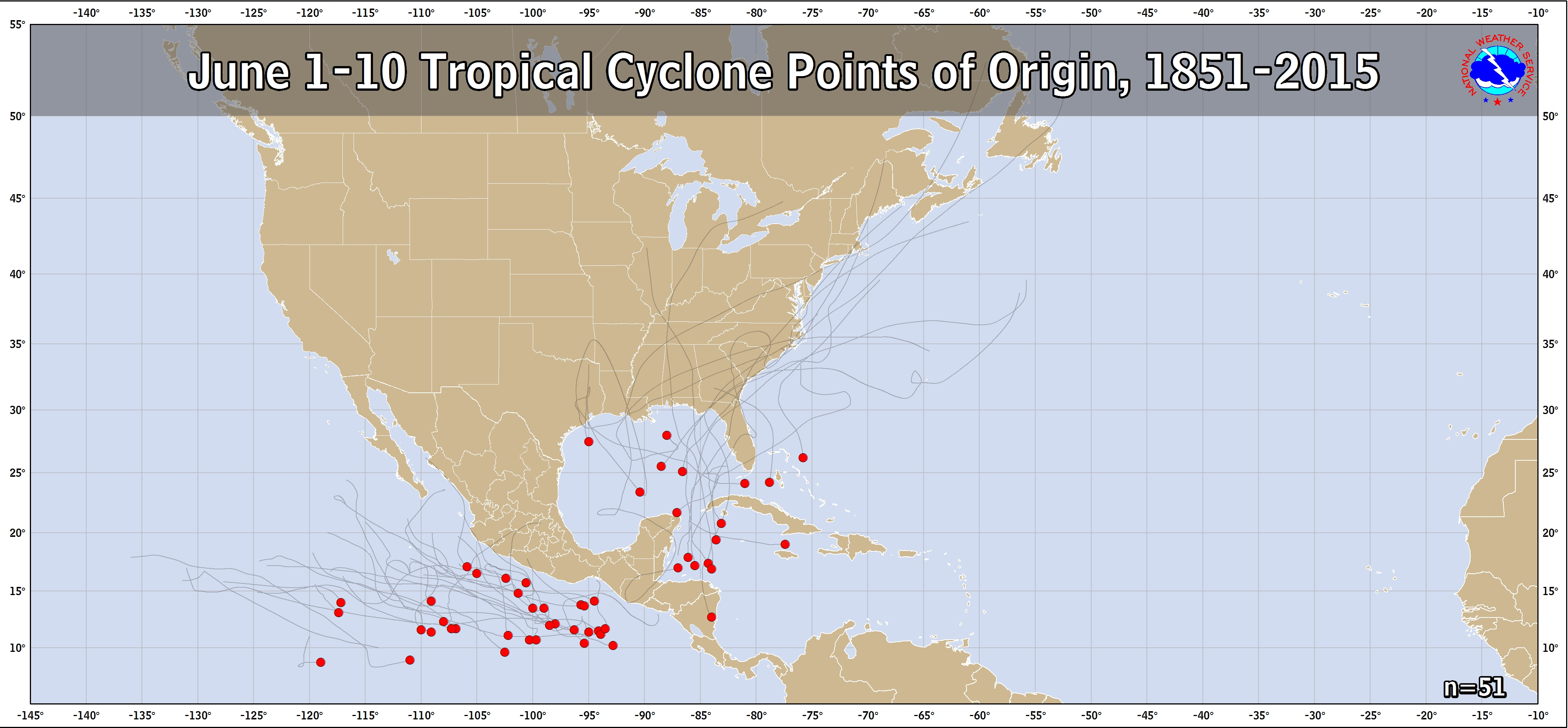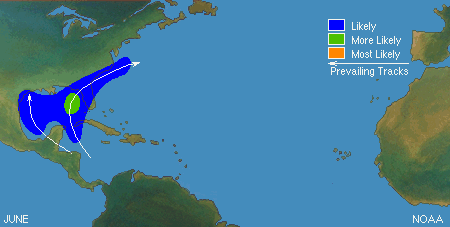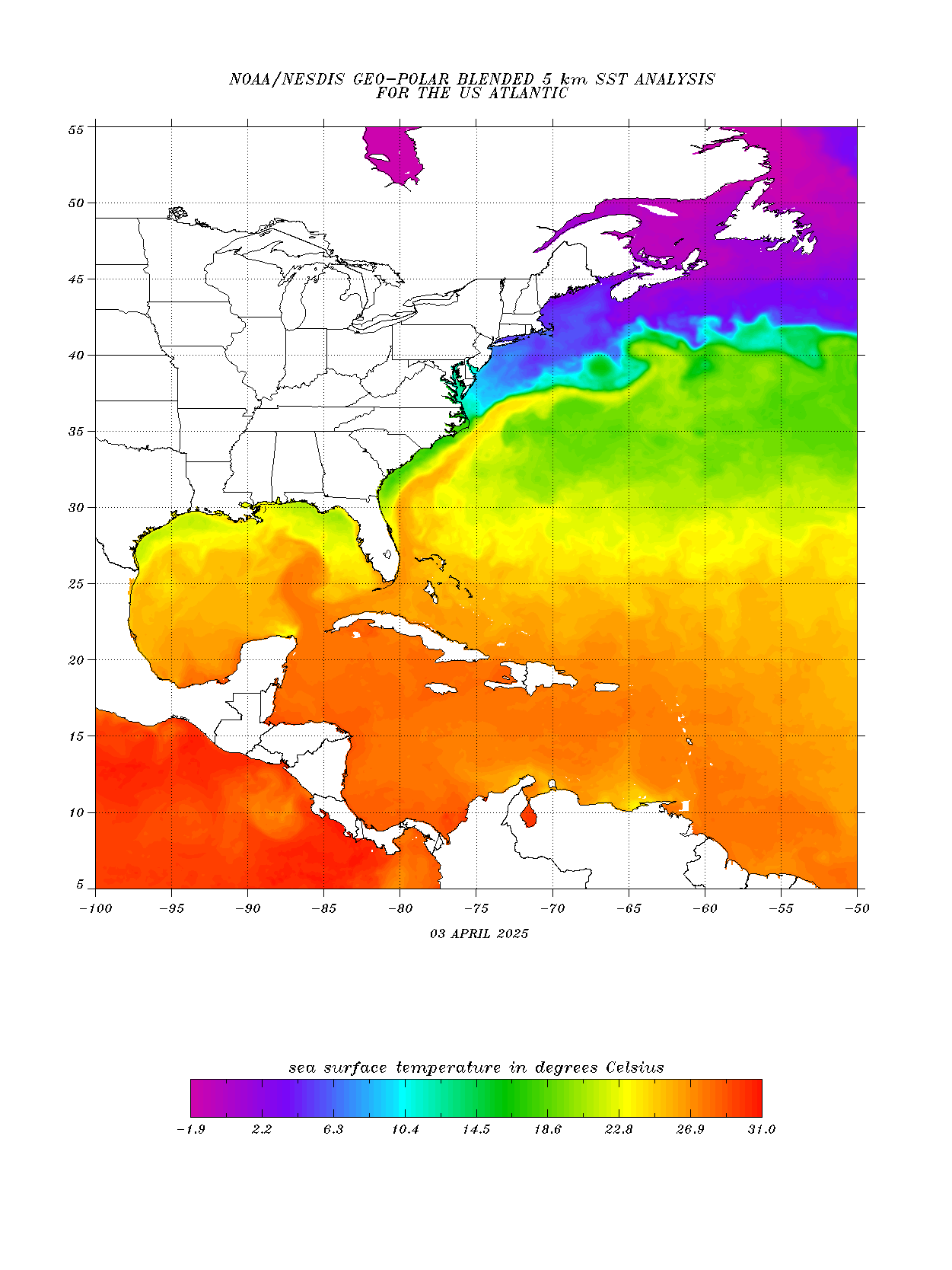Weak Tropical Wave may bring us a soggy weekend.
Waves are difficult to forecast, they can grow quickly or fall apart just as fast. We've been following a weak wave centered over Eastern Cuba that promises to bring us a good chance of downpours as we head into Saturday & Sunday. Keep in mind that waves are fickle, so if this one does not fall apart, a rainy weekend is on tap.
Color satellite image shows a line of clouds over Eastern Cuba. This is the western-most edge of the wave. The reason we use the color infrared image is to detect where most of the heavy rain is located. We give the highest cloud tops the red colors. The higher the cloud top, the heavier the rain tends to be. This tool is very useful over areas that lack radar technology.
Water vapor imagery over the same area illustrates how much moisture is in those same high clouds, but not at the surface as falling rain, but at higher elevations. It's like trying to look into a sponge and seeing how much water it is holding. The green areas show high concentrations of water vapor which can lead to more downpours.
Friday Forecast
European Model
If this wave holds, high pressure to the northeast will help drag in the moisture, shown in green. This means by Friday some storminess can be expected over Cuba, the Bahamas, South Florida
Saturday Forecast
The first half of the weekend may prove to be the wettest with possible downpours over much of the peninsula, NW Bahamas and Cuba.
Sunday Forecast
As the wave moves west, we could still see lingering moisture causing some showers and storms through the second half of the weekend.The rain may stick around over the NW Bahamas and Western Cuba as well.





